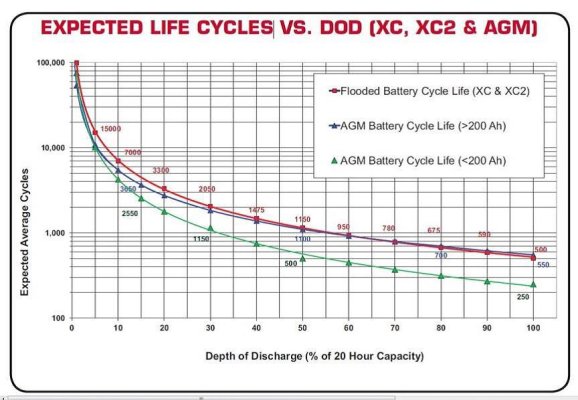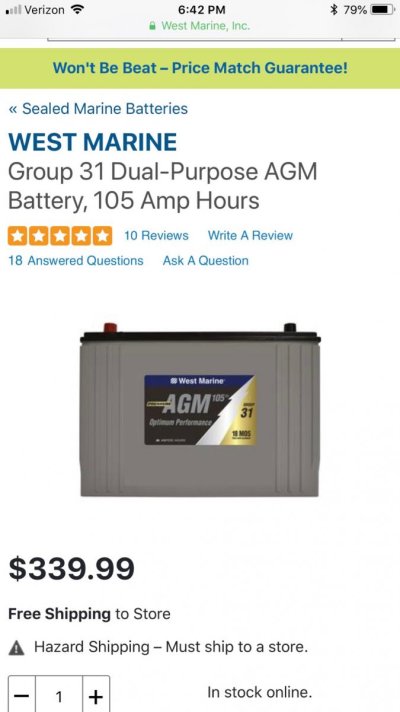Longo
Member
- Joined
- Dec 23, 2020
- Messages
- 9
- Vessel Name
- Serendipity
- Vessel Make
- Albin Palm Beach 37
Hello all,
Looking to replace the batteries on my boat - Albin 37 with two Volvo TAMD40B (165 horse 6 cylinder diesels). Boat came with and currently has two 8D’s with provide house power and of course for starting the motors. Does anyone have any recommendations which are good replacements - do i need 8D’s or can i go with 4Ds for a little less weight and cost.
Thanks!
Looking to replace the batteries on my boat - Albin 37 with two Volvo TAMD40B (165 horse 6 cylinder diesels). Boat came with and currently has two 8D’s with provide house power and of course for starting the motors. Does anyone have any recommendations which are good replacements - do i need 8D’s or can i go with 4Ds for a little less weight and cost.
Thanks!

 . It makes your setup more complicated but it will serve as a good starting system and a good deep cycle system.
. It makes your setup more complicated but it will serve as a good starting system and a good deep cycle system.

